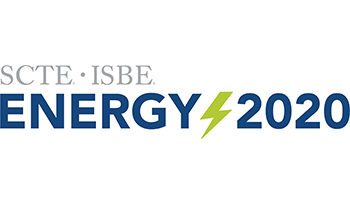Battery Backup Technology in Cable Broadband Networks
By Mark Vodopest
Batteries have been the main source of standby power in communications networks for decades. With its reputation of “getting the job done,” the traditional valve regulated lead-acid (VRLA) battery is regarded as the workhorse of network standby power. Things are changing in the industry, however, and cable operators need to be sure that their backup power solutions are future-proof. Battery technology has evolved considerably in recent years, so operators must understand the attributes of different battery types to meet the changing backup needs of their diverse network sites.
Evolving battery technologies bring new options
Most of the increased runtime challenge falls on outside plant (OSP) sites, where battery backup solutions must be tailored to the specific space, weight, and environmental conditions of the site.
One of the key advances in lead-acid technology is thin plate pure lead (TPPL), with plate thicknesses around a third of standard batteries, increased surface area, resulting in higher plate counts for significant gains in energy density. This enables more battery capacity to be packed into precious cabinet space. TPPL batteries also offer very short charging times, long life cycles and low self-discharge rates, enabling them to be warehoused for long periods without a refresh charge.
Despite their higher energy densities, lead-acid batteries are relatively heavy and can take up a lot of space. Lithium-ion batteries, on the other hand, bring further advantages, in both energy density and weight, offering potential solutions for pole-mounted applications.
TPPL and lithium-ion offset their higher upfront costs with extended lifecycles and enhanced charging efficiencies. Moreover, for sites where poor utility grid reliability reduces the life of lead-acid batteries, these technologies may offer an improved total cost of ownership (TCO).
When deploying batteries, overall system design is critical
A total system approach is essential to get the best performance, longest lifecycles and, therefore, best TCO from any new battery deployment. Unlike the traditional lead-acid workhorse, TPPL and lithium-ion batteries require advanced charging cycle algorithms that integrate careful thermal management. Uninterruptible power supplies (UPS) and cabinets therefore must include the charging provisions required to maximize the value and lifetime of these advanced technologies. With lithium-ion batteries, the battery management system (BMS) addresses safety and brings additional benefits through enhanced remote monitoring capabilities. Specialized knowledge and expertise make it easier to know how to design a battery backup solution.

Mark Vodopest,
Broadband & Renewables Market Manager,
EnerSys
Mark is a Marketing Manager for broadband network energy storage systems at EnerSys®. With 20+ years of experience in battery chemistry and powering global broadband networks, Mark has helped operators around the world deliver reliable broadband connectivity. Mark received his bachelor’s degree in Electrical Engineering from Washington State University.
Shutterstock




